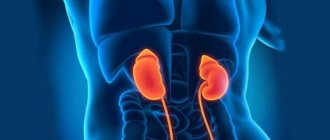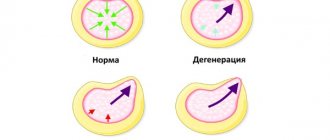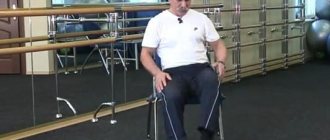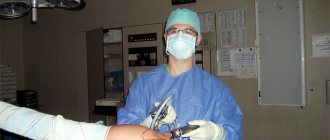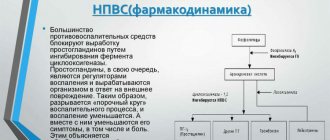- Home >
- Clinic services >
- Neurology Clinic >
- Intercostal neuralgia
Intercostal neuralgia is a complex disease that occurs as a result of pinching or compression of the intercostal nerves. As a rule, older people face this problem due to changes in the structure of the vascular wall. In simple terms, intercostal neuralgia is irritation or compression of the nerves that run from the spine along the intercostal spaces. This disease is also known as thoracalgia.
At the MART clinic on Vasilyevsky Island
- Experienced doctors (including those practicing in the USA and Europe)
- Prices affordable for everyone
- Expert level diagnostics (MRI, ultrasound, tests)
- Daily 8:00 — 22:00
Make an appointment
Features of the treatment of intercostal neuralgia with exercises
Intercostal neuralgia is not an independent disease. This is one of the typical symptoms of thoracic osteochondrosis. The difficulty of neuralgia is that the symptoms can be confused with manifestations of heart failure. Intercostal neuralgia tends to appear on the left side of the spine. It is characterized by signs:
- pain in the hypochondrium;
- radiates to the arm or shoulder;
- pain intensifies with reflex actions: coughing or sneezing;
- there may be a tingling or burning sensation in the chest;
- there are signs of numbness in the chest area.
The same symptoms apply to gastric ulcers and angina pectoris, and sometimes to other heart diseases.
But they can be distinguished by several features. With intercostal neuralgia, the pain increases progressively and does not subside. This pain is characterized by persistence, which can last from several hours to a week. Emergency heart medications will not work on such pain. It can also be distinguished from gastrointestinal diseases: by taking Noshpa or another stomach medicine. But intercostal neuralgia is not so innocent. It brings severe pain and deprives a person of the opportunity to live a full life for a decent period. This happens because the nerve root is pinched, which gives the feeling of pain. And the fastest way to release it is with the help of special exercises that are aimed specifically at releasing nerve fibers.
Symptoms
The main symptom of intercostal neuralgia is pain in the ribs, which has an acute burning character, sometimes dull. The pain can develop in paroxysms or appear periodically. During attacks, the pain can be intense and intensify with coughing, sneezing, and body movements. The pain is usually localized in the area of the lower ribs and can radiate to the shoulder or arm, which often makes such attacks of pain similar to cardialgia. Pain with intercostal neuralgia from pain in the heart in the more constant nature of the pain intensity, and in the absence of changes in the cardiovascular system (changes in pulse, pressure). In addition, cardiogenic pain does not increase with trunk movement and there is no local tenderness in the rib area. Pain during intercostal neuralgia may be accompanied by vegetative manifestations (pallor or redness of the skin, sweating), fasciculations of muscle groups, impaired sensitivity in the area of pain (numbness). Palpation of the area of paravertebral points in the intercostal spaces in the area of attachment of the ribs to the sternum can be painful. Sometimes pain with intercostal neuralgia can radiate to the lower back and simulate renal colic.
Treatment of intercostal neuralgia
You need to understand that the peculiarity of the treatment of any disease of the spine is that it slowly and reluctantly submits to the action of medications.
The main emphasis in the treatment of neuralgia is always on exercise therapy. But at the first stage it is necessary to relieve the intensity of pain. Only after this is it allowed to start gymnastics. Non-steroidal drugs are prescribed to reduce pain. Their task is not only to relieve pain and spasms, but also to reduce swelling and inflammation in the tissues.
Therapy is most often used according to the following algorithm:
- physiotherapy;
- magnetic therapy;
- reflexology;
- acupuncture;
- massages and manual therapy.
The sequence and combination is selected individually. Muscle relaxants are required to be prescribed. More often it is Mydocalm, the drug is effective and rarely causes side effects. Mydocalm is necessary to restore normal muscle tone. It protects the muscle layer from overstrain and this helps reduce spasms.
Treatment of intercostal neuralgia at the MART clinic
After a neurologist has confirmed the diagnosis of intercostal neuralgia, he selects treatment for the patient on an individual basis, since each patient has his own characteristics and severity of the problem.
The course of treatment may include methods such as:
Drug treatment of intercostal neuralgia
First of all, drug treatment is aimed at eliminating pain. For this purpose, the medicine market offers a huge number of drugs in tablets, injections or suppositories. However, the use of drugs alone does not always achieve the desired results, so it is necessary to additionally take antiepileptic drugs and antidepressants to relieve pain memory.
To eliminate muscle spasms, muscle relaxants are used, due to which the muscles relax and the pain goes away.
If the pain is very severe, the doctor may perform blockades with lidocaine. On the modern market there are special patches from which the drug is gradually released into the skin.
During the treatment of intercostal neuralgia, special attention should be paid to tissue swelling, which significantly complicates the course of the disease. For this purpose, doctors prescribe diuretics, venotonics, and means to improve microcirculation in the disease area.
And, of course, it is important to restore the damaged nerve. In this case, vitamin therapy will help. The most useful are B vitamins, since they are the main constructors of the nervous system.
If you have any questions, ask our specialist! Ask a Question
Physiotherapy and reflexology
At the MART medical center, various physiotherapeutic and reflexology procedures are used, including:
- acupuncture
- mud therapy
- apitherapy
- laser and ultrasound therapy
- magnetotherapy
- ultraviolet heating
The use of magnetic therapy in the treatment of intercostal neuralgia helps relieve swelling, increases muscle tone, and also relieves pain and reduces inflammation.
Ultraviolet heating is aimed at producing vitamin D in the body. This is necessary for the absorption of calcium, as well as relieving inflammation and pain.
Laser treatment of intercostal neuralgia involves exposing the diseased area to a helium-neon laser. Thanks to the procedure, you can relieve pain, spasms, reduce inflammation, and activate recovery processes.
Ultrasound therapy involves the use of vibrations of ultrasonic waves to relieve pain and inflammation.
Acupuncture is a method of influencing biologically active points of the body, with which you can restore conductivity along nerve fibers, and, as a result, remove the pain symptom. To prevent the problem from arising again in the future, professionals carry out several courses of the procedure.
Result and features of exercise therapy
For intercostal neuralgia, exercises are selected so as to support not only the thoracic region.
The spine is a single system and therefore gymnastics for intercostal neuralgia should take into account all departments. Exercise requires compliance with several regulations. First of all, before classes you need to stretch your muscles a little and warm up your entire body. This will help avoid conditions such as muscle jamming or new pinching due to an unsuccessful turn. The load should not be sudden and immediately maximum. A person performs strictly those exercises that are available to him and do not cause pain. It is forbidden to do exercises with intercostal neuralgia through force or tension. If the exercise causes pain, put it off and come back in a few days.
With intercostal neuralgia, it is forbidden to continue exercising if there is a strong heartbeat that causes discomfort. Normally, an interruption in heart rate during exercise does not bring such a sensation; breathing is automatically restored after stopping the exercise. If this does not happen, hot flashes appear in the head or the face turns red, you need to stop exercising and consult a neurologist. In such cases, it is recommended to visit a cardiologist and rule out several heart diseases for which exercise is prohibited. First of all, this is hypertension or ischemic disease.
Symptoms of intercostal neuralgia
To recognize the disease, you need to check for the following symptoms:
- Pain in the chest area that does not stop for a very long time. They can be both local and encircling in nature.
- Impaired sensitivity in the area of the disease, muscle tension, which becomes more noticeable during movement, coughing, playing sports and feeling the sore spot;
- It is very difficult for a patient with neuralgia to breathe, as the pain in the chest becomes more and more noticeable.
Exercises for intercostal neuralgia for every day
The beginning of exercises for intercostal neuralgia should be with such an exercise.
Lie on the floor and relax your body completely. The back is absolutely straight and free, now we pull our arms up and our toes down. The movement stretches the entire spine and is inherent in physiology. When we wake up, almost everyone does “stretches” like this. Then we also pull our arms up, but raise our feet and also try to stretch our back. The movements are only soft, almost lazy. The second exercise can be performed even if there is pain in the back. It is optimal for intercostal neuralgia and often allows you to quickly get rid of pain. Lying on your back, place your feet on the floor. Now you need to make two movements: the lower part of the body slowly turns to the right, and the upper part to the left. Then vice versa. The task is not easy, you need to turn as much as possible. Ideally, keep your feet flat on the floor as you turn. But with progressive osteochondrosis, this cannot be done immediately. Increase the degree only as you get used to it.
The third exercise involves taking the fetal position. Lie flat and pull your knees in, then grab them and try to maintain the position. Then calmly relax and lie down, repeat again. For intercostal neuralgia, start the exercise 2 times and increase the frequency over time.
This exercise for intercostal neuralgia should be performed carefully, especially if cervical osteochondrosis is present. Be sure to check with your healthcare professional! Lying on your back, raise your legs and clasp your knees with your hands. After this, do a movement like rolling on your buttocks. Extremely carefully and with minimal strain, especially on the neck. Then sit down and clasp your knees from the outside, arching your back in the lumbar region. Hold the position a little and calmly release your legs.
Why classes are useful
Normalized physical activity has a beneficial effect on the body for a number of reasons:
- improving blood flow to nerve endings helps restore damaged nerve endings and tissues;
- increasing resistance to stress reduces the risk of neuralgia;
- strengthening the immune system.
When doing therapeutic exercises, new neural connections are formed that make the body forget about the formation of pain.
Spinal diseases caused by a sedentary lifestyle are common causes of intercostal neuralgia. Exercise therapy helps to relieve these disorders, thereby reducing the risk of relapse of thoracic radiculitis.
A set of special physical exercises will help normalize the position of the spine, relieve tension in muscle tissue and eliminate possible pinched nerve endings, which reduces pain.
Causes of intercostal neuralgia
There are many sources that cause intercostal neuralgia. This can be external (poisoning with heavy metals, medications) and internal intoxication. The latter are usually associated with diseases in neighboring organs and tissues (pleurisy, spinal diseases).
Pain in the intercostal space is often caused by diffuse pathologies of the nervous system - hormonal spondylopathy, polyradiculoneuritis, multiple sclerosis, as well as infections such as tuberculosis and herpes zoster.
Often this symptom occurs due to spinal pathology, injuries, allergies .
Metabolic disorders and hypoxia of nervous tissue are promoted by anemia, diabetes mellitus, alcohol intoxication, hepatitis, malabsorption and decreased concentrations of B vitamins, atherosclerosis and hypertension.
As a rule, intercostal neuralgia, the symptoms of which everyone should know, develops under the influence of several factors. It is characteristic that it is never diagnosed in children. We can say that this is a disease of people mainly in the middle and older age categories.
Rules for performing therapeutic exercises
To obtain the maximum benefit from physical therapy, it is necessary to take into account a number of factors in which it is better to temporarily abstain from exercise:
- acute phase of pathology, which is characterized by severe pain;
- the presence of swelling of the nerves in narrow places, otherwise - tunnel syndrome.
Exercise therapy should begin 2-3 days after the main therapeutic procedures.
When starting physical exercise, you should follow a few simple rules:
- dose the load;
- avoid pain when performing the complex;
- do exercises regularly;
- When choosing a training program, consult a specialist.
There are several techniques that are used for physical therapy for intercostal neuralgia:
- Pilates - effective due to the use of stabilizer muscles and minimal injury, it is also possible to use a mixture of yoga and Pilates;
- V. Dikul’s technique;
- Bubnovsky exercises.
All exercises are performed smoothly, at a measured pace.
Symptoms. Features of postherpetic neuralgia
The disease is difficult to diagnose and requires careful examination. Signs of neuralgia can be deceptive and often cause the problem to be misidentified. Symptoms may correspond to many inflammatory processes, cardiac pathologies or gastrointestinal diseases.
Characteristic signs of intercostal neuralgia:
- Acute pain in the chest, side, shoulder blade, along the ribs. The feeling of discomfort is so strong, especially at the initial stage of development of the pathology, that it is sometimes mistaken for a symptom of a heart attack.
- Increased pain when moving - lifting limbs and turning the body.
- Shortness of breath and confused, shallow breathing due to increased pain with deep inspiration.
- A sharp increase in pain with a sharp shaking of the body - sneezing, coughing, laughing.
- The peculiarity of the pain is its lightning speed, shooting - the patient stops moving and freezes.
How to distinguish intercostal neuralgia from other diseases? Differentiation of symptoms:
- Extreme calm of the patient. A person tries to find a comfortable body position and does not show concern - this behavior is characteristic of a heart attack.
- Neuralgia may be accompanied by cyanosis of the fingers, nose, lips, ears, hypotension, pale skin and cold, sticky sweat.
- Thoracic radiculitis is characterized by a lack of desire to bend in half, as patients with pancreatitis do.
If you suspect a cardiac nature of the pain, you must immediately give the patient validol or nitroglycerin and call an ambulance.
If the disease occurs against the background of active activity of the herpes simplex virus in the body, then both the symptoms and therapy will be different.
A noticeable sign is that a characteristic blistering rash appears along the intercostal nerves on the surface of the skin. Over time, the formations burst and dry out to crusts, this is accompanied by itching, redness, and swelling in the area of the rash.
The neurotropic herpes virus remains in the human body and cannot be completely cured. Acute manifestations occur against the background of hypothermia, loss of strength, fatigue and decreased immunity. At the first symptoms of virus activation, you must immediately take an acyclovir-based drug and apply the product in the form of a cream or ointment to the skin. Taking the drug is necessary as early as possible, every hour is important, because delay will lead to the fact that the moment will be missed and the patient will suffer from unpleasant and painful symptoms for a long time.
Set of exercises
The following exercises must be performed:
- Take a few deep breaths in and out. This will increase blood flow and help warm up the muscles.
- Slight tilts from side to side. Place your feet shoulder-width apart, and relax your arms at the beginning of the exercise. Gradually increase the amplitude of the tilt and alternately stretch your arms up behind your head. Repeat 15–20 times.
- In a standing position, place your hands on your belt and perform 8-12 turns of the body to the right and left.
- Bend forward. Place your feet shoulder-width apart, body straight, arms extended down. Take a deep breath and, as you exhale, gently lower your head, round your back and, relaxing, bend towards your feet. Remain in this position for a few seconds and carefully return to the starting position. When lifting up, raise your arms above your head and bend back a little. Perform 5–7 times.
- While lying down on a parallel bench or sofa, hang your head over the edge and stretch your arms with weights (water bottle, dumbbells) forward. Slowly move your arms back behind your head with maximum amplitude while taking a deep breath. As you exhale, return to the starting position, lifting your shoulder blades off the surface. The number of repetitions is 10 times.
- "Kitty." Get on your knees and lean on your hands (take the position “on all fours”). Slowly bend and round your back. Perform the exercise for 2–3 minutes.
- "Cobra". From the starting position of the previous exercise, stretch your arms forward and place your knees, stomach and thighs on the floor. Stretch your head and shoulder blades back a little and lie on the floor. Then slowly raise your shoulders, straighten your arms and return to the lying position. Repeat the exercise 10–12 times.
- “Boat” according to Bubnovsky’s method. Lying on your stomach, extend your arms along your body, keep your legs together. Lift your shoulders, arms and legs off the floor and slowly return to the starting position. Perform the exercise for 1–2 minutes.
- While lying on the floor, place your feet on the floor, stretch your arms forward and place your chin on the floor. Smoothly round your back and stretch it up, then slowly return to the starting position. Perform 10 repetitions. Exercise according to the Dikul method.
- Squats. Place your feet slightly wider than your shoulders, keep your body straight, hands on your belt. Slowly perform a shallow squat and smoothly level up, keeping your body as straight as possible. The number of repetitions is 10–12 times.
Why do you need therapeutic exercises?
It is important to understand that exercises for intercostal neuralgia of the thoracic region must be approved by a specialized specialist. Self-medication often leads to dangerous complications, including disability.
At the first manifestations of the disease, you should seek help from a clinic. It is necessary to make sure that the inflammatory process and swelling do not compress the nerve roots. In this case, you first need to eliminate the attack.
Also, you should not load the body with muscle spasms. The best option under such conditions is to sign up for a relaxing massage.
Exercises for thoracic neuralgia should:
- eliminate unpleasant signs of the disease (pain, swelling, swelling);
- restore the functioning of the circulatory system;
- prevent complications.
Many people write in reviews that exercise therapy normalized sleep, relieved nervous tension, unmotivated aggression and irritability.
Treatment
It is important to begin treatment for intercostal neuralgia at the first signs of the disease. Therapeutic measures are carried out in stages and are initially aimed at relieving symptoms - pain relief, and then at activating metabolic processes in the tissues of the affected area.
The primary nature of neuralgia can be successfully overcome using reflex treatment methods (acupuncture, vacuum therapy, pharmacopuncture), taking B vitamins. Secondary manifestations of thoracic radiculitis require limitation of physical activity, physical therapy and pain relief.
Drug treatment
After confirming the diagnosis, the following drugs are used to treat neuralgia:
- Non-hormonal anti-inflammatory drugs: Nalgesin, Movalis, Celebrex. For the first 3-5 days, medications are prescribed in the form of injections, then it is advisable to replace them with tablet form.
- Blockade of trigger points - local anesthesia with anesthetics, with high pain intensity, glucocorticosteroids are added to them.
- Centrally acting muscle relaxants: Sirdalud, Mydocalm. Drugs in this group relieve spasm and swelling of muscle fibers, which helps reduce compression on the nerve.
- Concentrated vitamin preparations, B vitamins.
- Pain-relieving patches for nighttime sleep or warming ointments.
- Taking tricyclic antidepressants is justified in the presence of chronic chest pain - the drugs reduce anxiety and improve sleep quality.
Drug treatment alone is not enough, because to consolidate the result, a set of measures is required, which includes shock wave therapy.
Treatment with shock wave therapy. Other treatments
Shockwave therapy is the application of sound waves to the affected area. The effect is aimed at the source of inflammation and is selected individually for each patient depending on the severity of the disease.
In addition to this technique, various types of non-drug treatment are used, namely:
- acupuncture;
- laser therapy;
- UV;
- treatment with essential oils;
- massage;
- exercise therapy;
- electrophoresis;
- acupressure.
It is important to remember that not all physiotherapy procedures are recommended in the acute stage of the disease, so a specialist should be involved in selecting a comprehensive course of treatment.
Intercostal neuralgia is not only an unpleasant disease that can disrupt the patient’s normal life for a long time, but also an insidious pathology that can disguise itself as many diseases, sometimes completely unrelated to the nervous system and muscles. Therefore, if you experience severe shooting pain that radiates to the arm, under the shoulder blade and intensifies with movement, you should immediately consult a doctor or call an ambulance at home - such actions will help prevent the consequences of more dangerous diseases and identify them in time.
When gentle loads help
The indication for exercises for neuralgia of the thoracic spine is the rehabilitation period after an exacerbation. Most often, the attack goes away within 3-4 days. An important condition for the effectiveness of the effect is the absence of inflammation. Before starting training, you must consult with a surgeon (orthopedist) and make sure that there is no hernia or swelling.
Separately, contraindications to physical activity should be noted. First of all, the doctor assesses the patient’s condition. The specialist’s task is to make sure that the patient does not have concomitant diseases of the endocrine system (diabetes mellitus), heart and blood vessels. A jump in blood pressure in this case can provoke a sharp deterioration in the condition.
It is necessary to highlight the fact that exercises for thoracic neuralgia do not help get rid of pain. On the contrary, stress aggravates the patient’s condition and causes disturbances in blood flow in the problem area. The list of contraindications also includes women during pregnancy.
Diagnostics
With classic manifestations, the diagnosis of intercostal neuralgia is not difficult (for example, with the consequences of herpes zoster). But given the possibility of pain in the rib area due to numerous diseases, it is often necessary to conduct a thorough examination. The diagnosis of intercostal neuralgia can be made based on the patient’s history of complaints (nature of pain, localization, intensity, duration of pain, presence of irradiation, increased pain with body movements), external examination (presence of spinal deformities), presence of pain on palpation in the area of attachment of the ribs to the sternum or paravertebral points in the thoracic spine. If it is necessary to differentiate with the cardiac nature of pain, an ECG is necessary. To identify degenerative changes in the spine, instrumental research methods such as radiography, CT, and MRI are used. In addition, densitometry is necessary to diagnose osteoporosis. EMG can be used to determine the extent of nerve fiber damage. Laboratory tests and ultrasound may be ordered to diagnose both rheumatological diseases and endocrine disorders or kidney diseases. The approach to diagnosing intercostal neuralgia should be based on the exclusion, first of all, of somatic causes of pain (heart disease, kidney disease, endocrine diseases).
Types of exercise therapy
Today, there are many options for influencing the inflammatory process. Most often, complexes are used that are developed by famous doctors for the rehabilitation of diseases of the musculoskeletal system and recovery after surgery.
Dikul's exercises
The main principle of exercises for intercostal neuralgia of the thoracic region is the tone of the muscle frame. The doctor recommends forcibly changing the position of the spine. To do this, you need to lie on your stomach and stretch your arms forward. The next step is to arch your back for 5-10 seconds. It is believed that such a load helps relieve inflammation and slightly reduce pain.
Bubnovsky's recommendations
In the recommendations of this specialist, there is often a mention that exercises for thoracic neuralgia should be done through pain. This is contrary to medical indications, so treatment can only be performed at your own peril and risk. In essence, the doctor’s advice boils down to stretching the spine. One option is to bend forward while kneeling. If during exercise you feel severe discomfort, it is better to stop exposure and try classical pharmacotherapy.
Classic loads
There is also an official medical complex. First of all, the patient is recommended to work on his breathing. Deep inhalations and exhalations relax and help eliminate spasms. After this, you can perform several squats and body bends. The main thing is to carry out treatment without fanaticism.
How does physical therapy work?
Exercises for intercostal neuralgia give positive results in the treatment of this pathology. Such physical education is prescribed by a specialist for each patient individually. When selecting exercises you should consider:
- severity of pathology;
- symptomatic picture;
- general condition of the patient.
Gymnastics for neuralgia has a positive effect on the patient by:
- restoration of proper rib mobility;
- elimination of a spasmodic state with a decrease in muscle tone;
- mood lifting, a person becomes cheerful and strong;
- positive effect for pregnant women, avoiding the use of medications.
How to do it correctly
When performing a therapeutic gymnastic course to eliminate intercostal neuralgia, you must follow certain standards in order to prevent injury and rapid recovery of the patient.
- Before performing the main exercises, you need to warm up ─ shake your arms and legs, turn your head, perform several bends.
- You should load yourself in a gradual manner, without muscle overload, otherwise intercostal neuralgia will worsen.
- Focus on strengthening the spinal muscles, not forgetting about the abdominal muscles with stretching of the spinal column.
- Motor activity during gymnastics is smooth. Gymnastics should not be performed if the neuralgia has worsened; in this case, it must be treated with medications.
- When some element of gymnastics is performed with great difficulty, then it is excluded; performing it with intercostal neuralgia will cause harm.
- Always control your spinal muscles to keep them relaxed.
- To get a positive result, to overcome neuralgia, you need to do exercises daily.
Set of exercises
- The patient lies on a special mat for gymnastics. Shoes and socks should be removed. You need to stretch your upper limbs up, feet down. Then pull your toes towards you, your feet pointing upward. The body can wriggle, with this exercise against intercostal neuralgia stretching the spinal column.
- Next, the patient lies with arms outstretched, shoulder girdle lowered, each foot pressed to the floor. You need to move your pelvis to the left side. Inhale, while exhaling, each knee goes to the right side, rushing together to the surface of the floor. At this moment the head looks in the other direction. This state must be fixed for 15 seconds, and also performed on the other side.
- Continue to lie on the surface of the floor, the upper limbs should be lowered so that they are parallel to the body, the soles are connected, each knee is spread to different edges. While inhaling, raise the sacrum with the lower back and chest. Move the cervical spine to relieve tension. Fix this state for up to 10 seconds, return the body to a horizontal position in the reverse order of execution. Do 4 approaches. The gluteal area should be tense and the neck should be relaxed.
- Connect the lower limbs and pull them towards the chest. Hug your knees with your palms. Inhale, as you exhale, your forehead should touch your knees. After 2-3 seconds, lower yourself to the floor surface.
Perform the exercises slowly and concentrate on your sensations. If you experience the slightest discomfort, reduce the intensity and increase the amount of rest.
- Stretch your lower limbs, slightly bending them at the knee joints, pull them to your chest, and hug the popliteal area of both legs with your upper limbs. Roll on your back with caution. Repeat the exercise no more than 3 times. You should not overstrain your neck, it is unsafe.
- Sit in the lotus position if possible. Take the upper limbs behind the back area, each hand parallel to each other. The chest is sagging anteriorly. Raise the pelvic area while inhaling, the gluteal muscles are tense. Then slowly lower down. Perform no more than 4 times. Make sure that the cervical spine is not overstrained.
- Next you need to sit down. The lower back is straightened, the lower limbs are brought together, the knee joints are bent, each heel is pulled towards the gluteal area. Use your palms to fix the popliteal area. Having rounded your back, you need to lower yourself down, inhaling at the same time. As you exhale, pull your body back toward your lower limbs. Repeat the exercise 3 times.
- Spread the lower limbs at shoulder width, bend the knee joints, and move the upper limbs behind the back so that they lie under the shoulder girdle. Raise the pelvic area. The body with the head and hips form a straight line. Perform the exercise 4-5 times.
- While sitting, extend your lower limbs forward. Upper ones ─ lift up, secure in a “lock”. The back stretches upward. Each leg is completely relaxed.
- Stretch both arms forward. As you exhale, turn your entire body to the left side with the left upper limb abducted 180°. Also perform this exercise in the opposite direction. It will stretch the intercostal spaces well, and intercostal neuralgia will gradually disappear.
- The left leg must be bent at the knee joint. The right palm is located on the left knee joint, and the left palm is located on the floor surface from the side edge. Perform several smooth twists to the left side. The coccygeal area and the crown form a straight line. The thoracic spine is pulled towards the left edge and upward. This exercise is also useful for eliminating neuralgia and will stretch the chest well.
- Sit cross-legged with your arms down in front of you, resting on your palms. Lower yourself forward, relaxing your lumbar region as much as possible.
- Stand up. Soles ─ shoulder width apart. Raise your upper limbs above your head, clasping your fingers. Turn your torso towards the left edge. Hold the position for 2-3 seconds, repeat on the opposite side.
- Repeat the previous type of exercise with the upper limbs already placed on the sides.
- Spread your arms to the sides, touch one to the floor surface, and raise the other up. Position your head so as to look at the raised upper limb.
- Two hands should touch the floor, each leg straight. Stretch your back, gently bend down, fix the position for no more than 10 seconds.
This treatment at home can be performed daily to eliminate intercostal neuralgia. You just need to not be lazy and do these exercises.
Causes of the disease
Intercostal neuralgia is characterized not only by a large number of symptoms, but also by a variety of possible causes and risk factors that provoke the development of the disease.
Causes of thoracic radiculitis:
- complications after chest injuries;
- age-related changes;
- diabetes;
- chronic fatigue;
- stress;
- formations in the spinal cord (location - thoracic spine);
- inflammatory processes in the body;
- chronic gastrointestinal pathologies;
- osteochondrosis;
- systematic wearing of compressive clothing;
- prolonged stay in an uncomfortable position;
- intervertebral hernia;
- deficiency of B vitamins;
- hypothermia;
- rib deformation;
- aortic aneurysm;
- back muscle strain;
- progressive kyphosis;
- chronic poisoning;
- viral and infectious diseases, colds;
- pleurisy.
The list is long and includes those diseases and risks that sometimes do not affect the intercostal muscles in any way, but are still capable of causing their inflammation with all the unpleasant symptoms characteristic of the disease.

